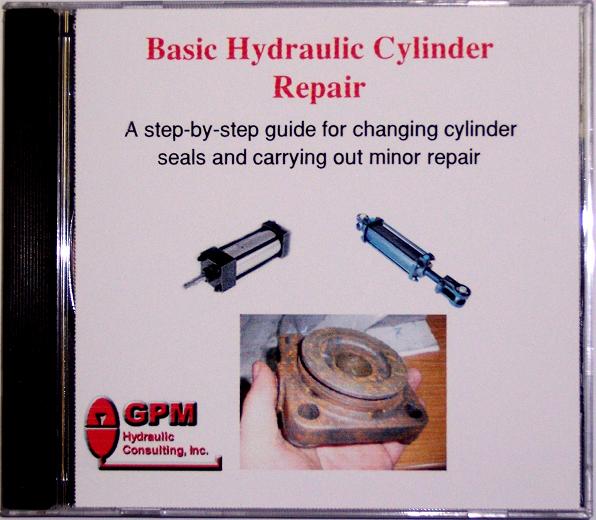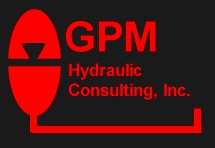
P.O. Box 1376
Monroe, GA 30656
(770) 267-3787 gpm@gpmhydraulic.com
For an archive of past newsletters, please visit:
http://www.GPMHydraulic.com/newsletter_archive/
CLICK HERE to send this newsletter to a friend!
|
'Troubleshooting Hydraulics' Newsletter |
||||
|
||||
|
In This Issue |
||||
1. Breather Caps - Your First Defense Against Contaminants 2. Call GPM for Emergency Hydraulic Troubleshooting 3. I Keep Having to Replace Cylinder Seals! 4. 2011 Public Hydraulic Reliability and Troubleshooting Workshop Schedule |
 By Jack Weeks
By Jack WeeksI know people get tired of hearing me ask, "When is the last time you cleaned that breather cap," or "When is the last time you changed that breather cap?" I'm admittedly a bit of a stickler about them. And I sometimes get frustrated when I find a very carefully compiled filter schedule on a machine with a ten-year old breather cap. Oh, don't get me wrong - scheduled filter changes are crucial to keeping oil clean. But system filters are primarily intended to trap wear contaminants in the oil, not trash that has found its way in from the outside. Outside contaminants can get into your machine by:
- New Oil - it isn't clean enough to go in your machine. Actually, when it is first refined, it probably is. But it has to get to you somehow. It goes through pipes, hoses and tanker trucks. It is packaged, and by the time you get it, there are probably visible contaminants. New oil must be filtered before going in.
- Reservoir Access Plates - whenever the reservoir is cleaned or internal parts are serviced, the oil is drained and the access plates are removed. There is a reusable gasket, but be sure it is not cracked or brittle. If it is, replace it. Keep them stocked, they're cheap - a bead of caulk is not an advisable replacement.
- Cylinder Seals - we get accustomed to seeing them leak, but remember that if oil has a way out, trash has a way in.
- Hose and Component Replacement - these fail while the machine is in operation. When production gets interrupted, we tend to take shortcuts to get back on line. But remember, if we don't take the time to do it right, we may have to make time to do it over!
But the number one culprit is the breather cap. It's regularly removed and replaced for adding oil and taking samples. Its efficiency is directly related to the seal it makes. Since it takes more oil to extend a cylinder than it does to retract it, the oil level changes every time a cylinder moves. And each time it extends, outside air comes in the breather. How often does this happen each day on your machine?
Does your reservoir have the best breather cap for its machine and environment? If it still uses the same type that came with the machine, probably not. Most machines are built by the low bidder. Shipping with the best breather money can buy is not the best way to win a contract. Seldom is a particular cap, or even a particular type of cap specified. Upgrading the breather is usually left to the customer.
How should you go about choosing a breather? There are actually two factors to consider - your machine requirements and its environment. The breather cap should filter intake air to at least the level of the return filters. How effective can a 5-micron return filter be if the breather cap only filters air to 15 microns? What type of environment is the machine in - dusty, dry, humid? Perhaps a cap with a dehumidifying feature should be used. If so, there are essentially two technologies to consider - a desiccant filter or one with a thermal moisture barrier. The desiccant filter should be replaced when the crystals turn from blue to pink. A cap with a thermal moisture barrier typically has a red light that illuminates when it needs to be changed.
The OEM should have a specification for airflow requirements, typically measured in Cubic Feet per Minute (CFM). If not, your vendor can calculate it. There are also several choices for filter media - steel mesh, paper and foam.
 Standard
filler breathers are the most common. They can be used in
applications where moisture is not a problem and the oil need not be
filtered below 10 micron. They should be checked and cleaned at
least once a month. Since their efficiency is directly related to
the spring seal, they should be replaced at least once a year. Don't
worry - they only cost a few dollars. These few dollars will be well
spent.
Standard
filler breathers are the most common. They can be used in
applications where moisture is not a problem and the oil need not be
filtered below 10 micron. They should be checked and cleaned at
least once a month. Since their efficiency is directly related to
the spring seal, they should be replaced at least once a year. Don't
worry - they only cost a few dollars. These few dollars will be well
spent.
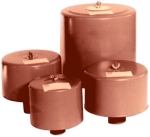 If
dust is a problem, the breather cap can be replaced with a filler cap that
makes a full seal and a breather filter can be installed. This type
of breather is not unlike the air filter on your car. It has a
removable cover and a replaceable element. The housing is available
in different sizes to accommodate any amount of airflow. The element
can be chosen based on the filtration needs of your machine and can have
moisture removal abilities.
If
dust is a problem, the breather cap can be replaced with a filler cap that
makes a full seal and a breather filter can be installed. This type
of breather is not unlike the air filter on your car. It has a
removable cover and a replaceable element. The housing is available
in different sizes to accommodate any amount of airflow. The element
can be chosen based on the filtration needs of your machine and can have
moisture removal abilities.
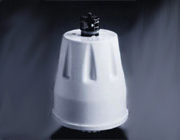 A
good compromise between a filler breather cap and a breather filter can be
a filler breather filter. This type looks similar to the spin-on
filter you replace periodically in your car. It can filter air as
clean as 3 microns and is available with water removal technology.
Some types have indicators that pop up when they need to be replaced.
A
good compromise between a filler breather cap and a breather filter can be
a filler breather filter. This type looks similar to the spin-on
filter you replace periodically in your car. It can filter air as
clean as 3 microns and is available with water removal technology.
Some types have indicators that pop up when they need to be replaced.
Whatever
type you choose, be sure to maintain it as it needs to be. There
will be instructions - read and follow them. But take your breather
caps seriously. The fact is, if something can't get in the breather
cap, it will have a much harder time getting in anywhere else. And
please, don't allow any of your machines to look like this:
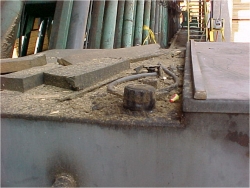
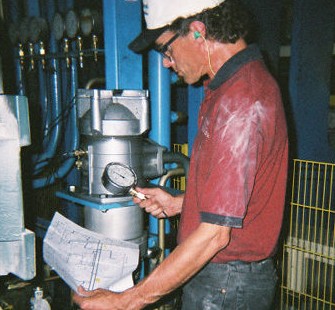
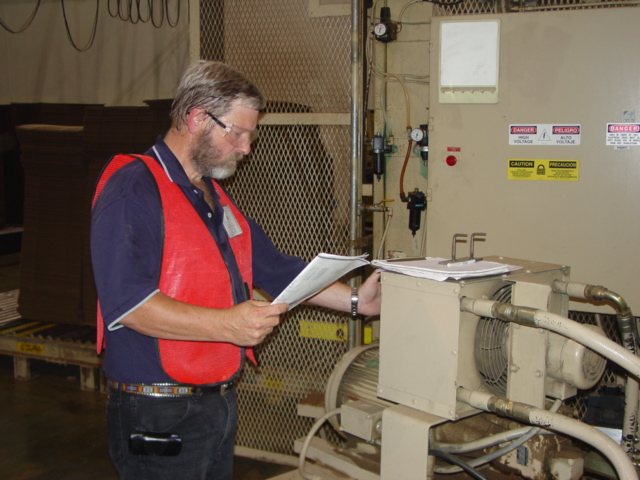
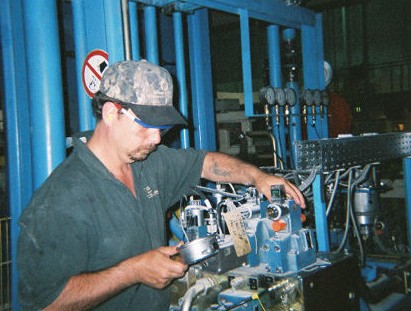
Nothing is more expensive than unscheduled down time. GPM’s customers know they can call whenever they have a troubleshooting issue they simply can’t resolve. With over 50 years experience dealing with hydraulic failures, our consultants have the resources to help troubleshoot whatever hydraulic problem you encounter. Whether you’re experiencing a total system outage, repeated component failure or just need a professionally designed preventive maintenance schedule, the consultants at GPM can help. Call GPM for
In-plant Troubleshooting
Leakage Problems
Pressure Settings
Shock Problems
Preventive
Maintenance Scheduling
Hydraulic Troubleshooting Manual Development
Startup
Consulting and Recommendations
Heat
Problems
Repeated
Component Failures
Speed Problems
Do you want to learn more about how GPM can help you? Go to http://gpmhydraulic.com/troubleshooting.htm
I've never done a study of just how much cylinder seals are costing people, but I bet the results would be astounding. I have literally seen cheap little cylinder seals cost a plant several thousand dollars in down time and hydraulic leaks. A surprising number of people think that cylinder seals are supposed to leak in order to provide lubrication to the cylinder rod! No, they're not. And if you are replacing them often, chances are good that you are using the wrong ones.
The next time you replace seals, pay attention while disassembling the cylinder. Is there any scoring on the rod? This is a big red flag. If you see scoring, look for contaminants. A particle count of your oil can tell you if the contamination is coming from the machine itself. If not, it must be coming from the outside. When the cylinder retracts is when your machine is vulnerable. Check the rod wiper. If it wasn't installed properly, trash can imbed itself in either the wiper or the seal. Make sure the seals are not upside down.
If you're having to change seals often, what is the condition of the old seals in when you remove them? If they are cracked or brittle, your cylinders are probably overheating. If there is a chemical breakdown, the problem may not be the seals themselves - it could be your oil. There could be some incompatibility with certain oil additives. Your vendor can help with this.
The most common problem? Improper installation. Even when the cylinder is brand new. Learn how to repair cylinders the right way with our Cylinder Replacement CD, available in the GPM Store.
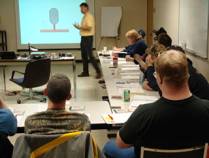
Hydraulic
Reliability and Troubleshooting 2011
3 Day Workshop
Registration
Fee Only $895.00 Per Person
Three
for the Price of TWO!
Every Third Registrant Attends for FREE!
Early Registration -
$845.00 For Confirmed Reservations
Booked 21 Days Prior to the Start of the Workshop
We still have limited availability for registration - Call (770) 267-3787 To Register
Learn More About Our Hydraulic Reliability and Troubleshooting Course
2011 Hydraulic Reliability and Troubleshooting Schedule
*Call If You Would Like To See A Workshop Scheduled In Your Area!
(770) 267-3787
| July 19 - 21 | Florence, SC |
| July 26 - 28 | Opelika, AL |
| August 16 - 18 | Jackson, TN |
| August 23 - 25 | Stockbridge, GA |
| September 13 - 15 | Augusta, GA |
| September 21 - 23 | Lufkin, TX |
| September 26 - 28 | Montgomery, AL |
If you've found our newsletter informative and beneficial please click here to tell your co-workers and friends.
A step-by-step guide for changing cylinder seals and carrying out minor repair. The manual contains disassembly, inspection of parts, minor repair, assembly, examples of seal failures and their causes, hydraulic cylinder speeds, metric/inch conversion table, fluid power formulas, rod and piston groove diameters.
$24.99 + Shipping & Handling
Site Index
[Home] [Our Training] [Hydraulic Consulting] [Safety Webinars] [System Flushing] [Our People] [Downloads and Multimedia] [Testimonials] [Hydraulics Quiz] [GPM Store] [Upcoming Events] [Contact Us]
GPM Hydraulic Consulting,
Inc.
Box 1376
Monroe, GA 30655
(770) 267-3787


